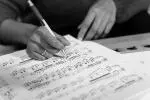A measure, also known as a bar, is a segment of a musical composition that contains a specific number of beats.
Measures serve as a way to break down a piece of music into smaller, more manageable parts. By dividing a composition into measures, musicians can more easily keep track of where they are in the music and play together as an ensemble.
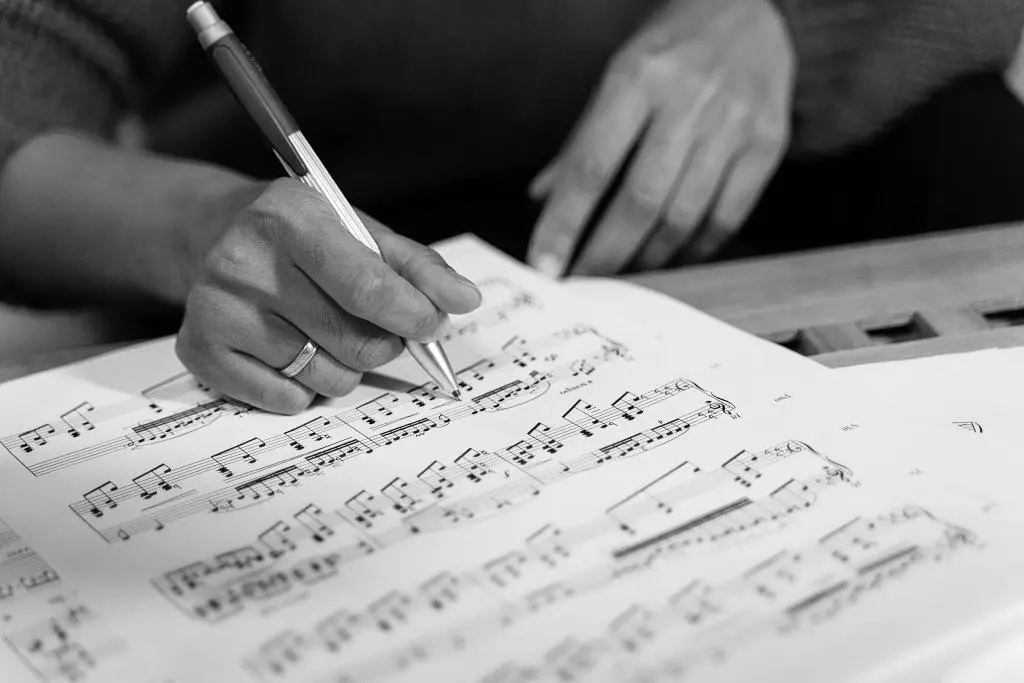
What is a Measure in Music: Table of Contents
Music notation is a complex system of symbols and signs that represent a variety of musical elements such as pitch, rhythm, dynamics, and more. With so many elements involved, it’s easy to get lost in the music or to lose track of where you are in a piece. This is where measures come into play.
Brief History of Measures
The development of measures and their use in music notation was a gradual process that spanned centuries. Prior to the use of measures, understanding musical notation was much more complicated for performers. Composers had to actively guide performers through the composition, as many of the notation elements were fragmentary.
It wasn’t until the 15th and 16th centuries that composers began using barlines to indicate different sections of a composition. Barlines were used to separate different musical phrases, making it easier for performers to navigate through the music. However, the barlines at this time did not create metered measures as they do today.
In the late 16th century, composers started using barlines to create measures in ensemble music. This made it much easier for the ensemble to find their places when playing together, as it ensured that every musician knew when to come in and when to stop playing. The measures were not yet all the same length, but this was a significant step towards creating standardized music notation.
By the mid-17th century, composers had begun to associate measures with time signatures. This meant that each barline was placed after the same amount of beats, and all the bars were the same length. The use of time signatures helped to give each measure equality, making it easier for performers to understand and execute the music.
Importance of Understanding Measures in Music
Understanding what is a measure in music is crucial for any musician, whether you’re a beginner or a seasoned professional. Measures serve as a foundation for rhythm and timing in music, and they help musicians stay organized and play together. Without a solid understanding of measures, it can be difficult to keep track of where you are in a piece of music, leading to mistakes and a lack of cohesion among ensemble members.
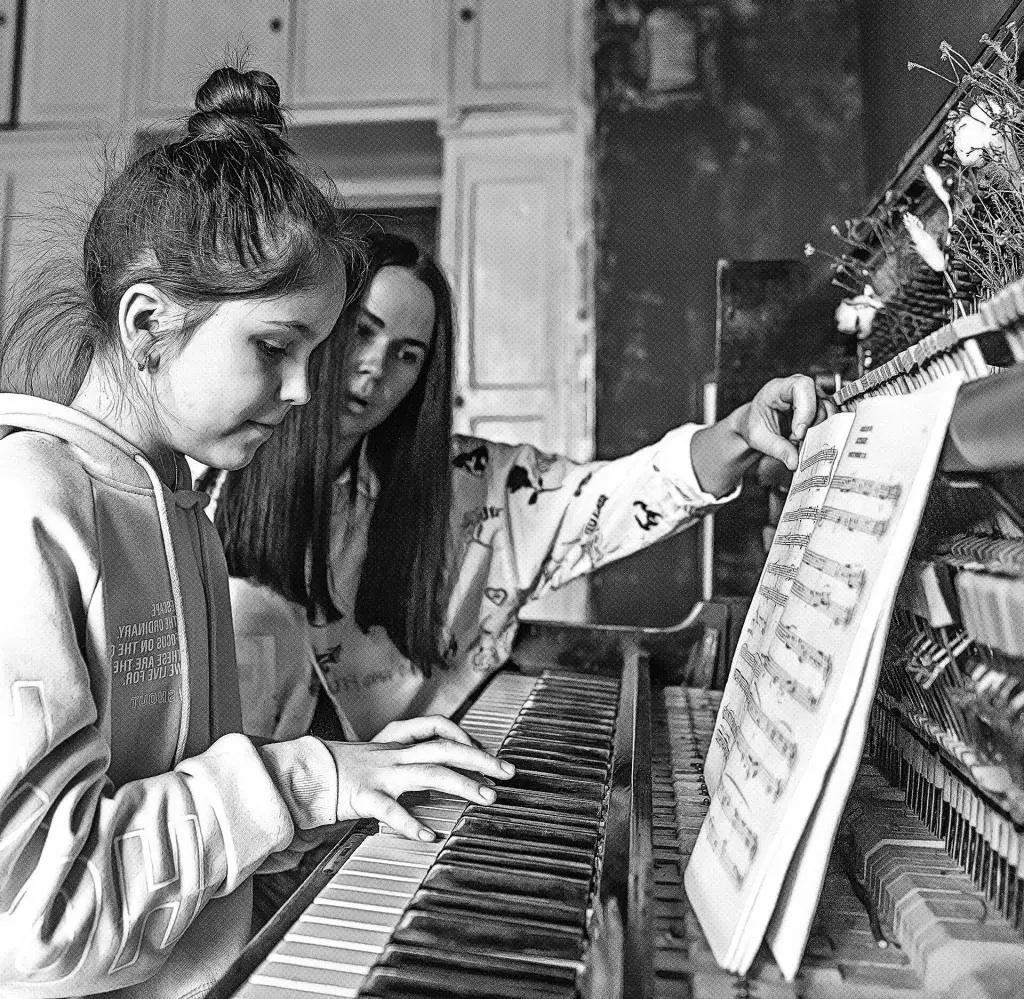
Furthermore, measures also provide a visual way to break down a piece of music into smaller, more digestible parts. This can help musicians to learn and memorize music more easily, and to analyze a piece of music to understand its structure and form. Measures also allow composers to create complex rhythmic patterns and syncopations that add depth and interest to their compositions.
Additionally, understanding what is a measure in music is essential for reading and interpreting sheet music. Time signatures, which indicate the number of beats in a measure and the type of note that receives one beat, are crucial for determining the rhythm of a piece of music. Barlines, which indicate the end of a measure and the beginning of a new one, provide reference points for keeping track of where you are in the music.
What are Measures in Music?
Understanding time signatures is essential for understanding measures in music, and it is a crucial component of being able to read and play sheet music accurately.
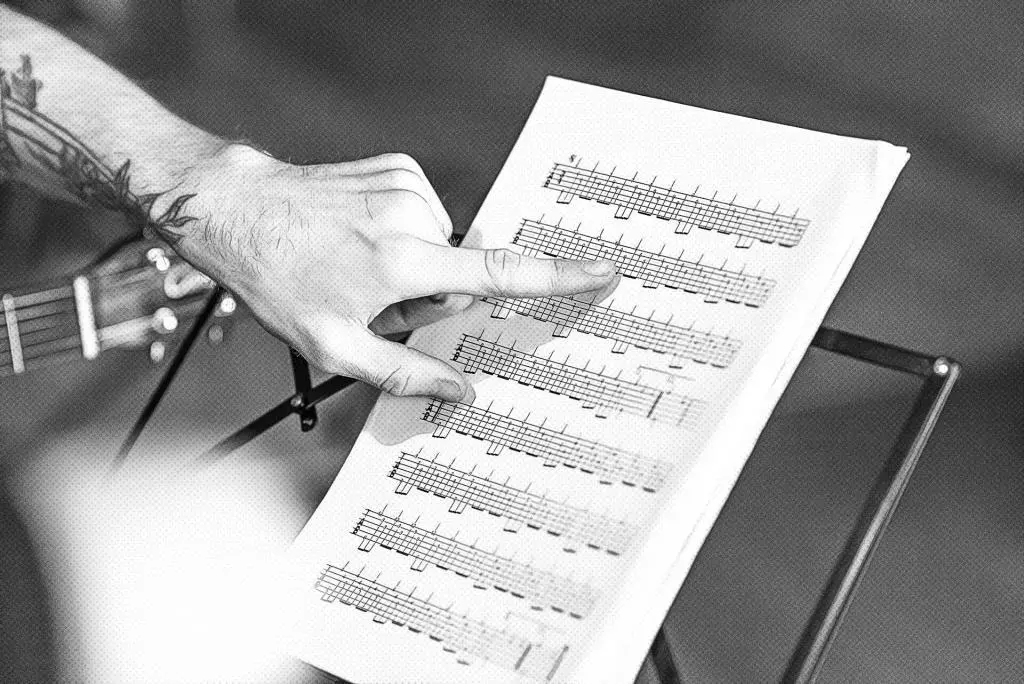
Explanation of Time Signatures and Their Relationship to Measures
Time signatures are a fundamental aspect of understanding measures in music. Time signatures indicate the number of beats in each measure, and they help musicians to establish a consistent sense of rhythm throughout a composition. In other words, time signatures provide a roadmap for musicians to follow as they play a piece of music.
| Time Signature | Number of Beats per Measure | Examples of Usage |
|---|---|---|
| 2/4 | 2 | Marches, Polkas |
| 3/4 | 3 | Waltzes, Minuets |
| 4/4 | 4 | Rock, Pop, Jazz, Classical |
| 6/8 | 6 | Jigs, Slides, Blues, Latin |
| 9/8 | 9 | Compound Triple Meter |
| 12/8 | 12 | Blues, Swing, Compound Quadruple Meter |
Definition of Simple and Compound Time Signatures
There are two types of time signatures: simple and compound. Simple time signatures have beats that can be divided into two parts, while compound time signatures have beats that can be divided into three parts. This division is important to understand, as it determines how musicians count and play the beats within a measure.
Explanation of the Top and Bottom Numbers in Time Signatures
Time signatures are written as fractions, with two numbers stacked on top of each other. The top number indicates the number of beats in each measure, while the bottom number represents the type of note that receives one beat. For example, in 4/4 time, there are four quarter-note beats per measure.
How to Read Time Signatures on Sheet Music
Time signatures are typically located at the beginning of a piece of sheet music. They can be written in numerical form (such as 4/4) or as symbols, which include the letter “C” for common time (4/4), a “C” with a vertical line for cut time (2/2), and others.
Common Time Signatures and Their Characteristics
Some of the most common time signatures include 4/4, 3/4, 6/8, and 2/4. 4/4 time is often used in popular music, and it consists of four quarter-note beats per measure. 3/4 time is often used in waltzes and other dances, and it has three quarter-note beats per measure. 6/8 time is often used in Irish jigs and other folk music, and it has six eighth-note beats per measure. 2/4 time is often used in marches and other upbeat music, and it has two quarter-note beats per measure.
| Time Signature | Name | Beats per Measure | Note Value | Characteristics |
|---|---|---|---|---|
| 2/2 | Cut Time | 2 | Half Note | Each beat is a half note, feels like a faster 4/4 |
| 2/4 | Duple Meter | 2 | Quarter Note | Two beats per measure, often used in marches and fast-paced music |
| 3/4 | Triple Meter | 3 | Quarter Note | Three beats per measure, often used in waltzes |
| 4/4 | Quadruple Meter | 4 | Quarter Note | Four beats per measure, most common time signature in popular music |
| 5/4 | Quintuple Meter | 5 | Quarter Note | Five beats per measure, used in some progressive and avant-garde music |
| 6/4 | Sextuple Meter | 6 | Quarter Note | Six beats per measure, often used in marches and folk music |
| 7/4 | Septuple Meter | 7 | Quarter Note | Seven beats per measure, used in some jazz and progressive rock music |
| 3/8 | Triple Meter | 3 | Eighth Note | Three beats per measure, often used in fast-paced dances like the waltz or the tango |
| 6/8 | Compound Duple Meter | 2 | Dotted Quarter Note | Two beats per measure, each beat is subdivided into three eighth notes, often used in Irish and Scottish folk music |
| 9/8 | Compound Triple Meter | 3 | Dotted Quarter Note | Three beats per measure, each beat is subdivided into three eighth notes, often used in Balkan and Middle Eastern music |
| 12/8 | Compound Quadruple Meter | 4 | Dotted Quarter Note | Four beats per measure, each beat is subdivided into three eighth notes, often used in blues and swing music |

The Structure of Measures
A measure, also known as a bar, is a segment of music that contains a specific number of beats and is separated from the rest of the composition by barlines. Measures provide a way to organize music into smaller, more easily digestible sections. Each measure has a certain number of beats, which is determined by the time signature.
Definition of Beats and their Relationship to Measures
Beats are the individual units of rhythm that make up a measure. The number of beats in a measure is determined by the time signature. For example, if a composition is written in 4/4 time, each measure will contain four beats. In contrast, if a piece is written in 3/4 time, each measure will include three beats.
Explanation of Barlines and their Function in Music Notation
Barlines are vertical lines on a musical score that indicate the end of one measure and the beginning of another. They help to visually separate the composition into smaller, more manageable sections. Barlines also serve as a reference point for musicians, helping them to keep track of where they are in the music.
Different Types of Barlines and their Significance
There are several different types of barlines that are used in music notation. The most common are the single barline, the double barline, and the end barline. The single barline separates one measure from the next. The double barline indicates the end of a section or piece of music. The end barline signifies the end of the entire composition.
In addition to these basic barlines, there are also repeat signs, which indicate that a section of music should be played again. The start repeat symbol indicates the beginning of the repeated section, and the end repeat symbol indicates the end of the repeated section.
Explanation of How to count Measures in different Time Signatures
Counting measures in music requires an understanding of the time signature. The time signature is displayed at the beginning of a piece of music and consists of two numbers stacked on top of each other. The top number indicates the number of beats in each measure, while the bottom number indicates the type of note that receives one beat.
To count measures in a piece of music, first identify the time signature. Then, count the beats in each measure according to the time signature. For example, in 4/4 time, each measure contains four beats. Count the beats as “one, two, three, four.” To count measures in 3/4 time, count the beats as “one, two, three.”
It’s important to remember that the emphasis is usually on the first beat of each measure. This helps to maintain a steady and consistent rhythm throughout the composition.
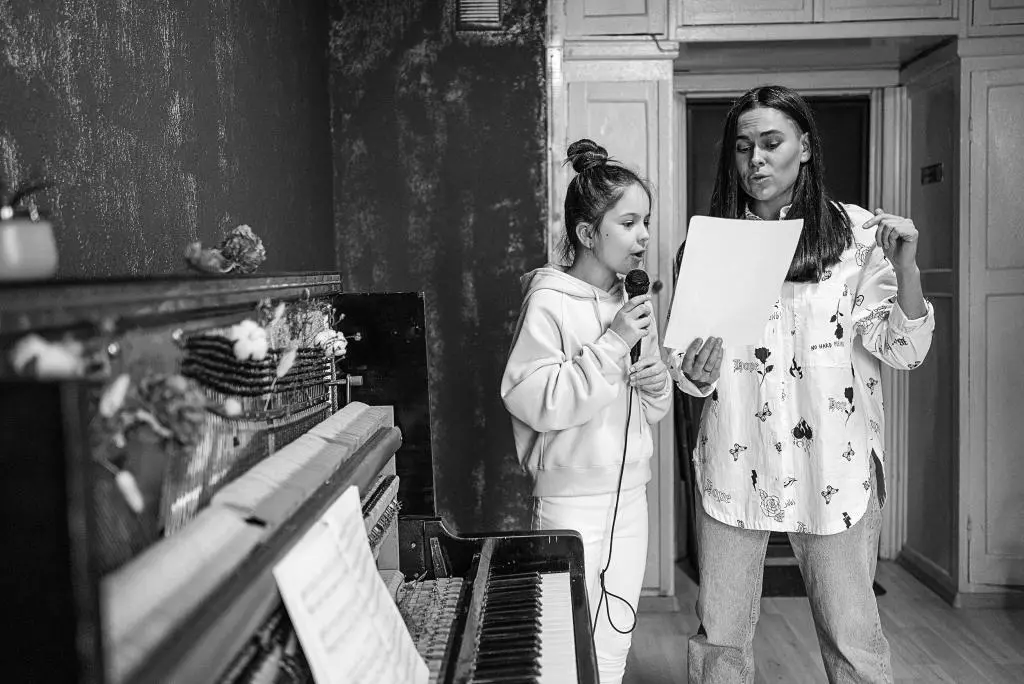
Variations in Measures
Understanding variations in measures is essential to create a cohesive and accurate performance. Musicians must have a thorough understanding of note values, tempo, and how they affect the number of notes that can fit in a measure.
Definition of Note Values and their Relationship to Measures
Note values are the symbols used to represent the duration of each sound or silence in music. They are an essential aspect of measures since they determine how many notes can fit in a single measure.
| Note Value | Duration | 4/4 Time Signature | 3/4 Time Signature | 6/8 Time Signature |
|---|---|---|---|---|
| Whole Note | 4 beats | 1 | 1 | 2 |
| Half Note | 2 beats | 2 | 3 | 2 |
| Quarter Note | 1 beat | 4 | 3 | 6 |
| Eighth Note | 1/2 beat | 8 | 6 | 12 |
| Sixteenth Note | 1/4 beat | 16 | 12 | 24 |
| Thirty-Second Note | 1/8 beat | 32 | 24 | 48 |
| Sixty-Fourth Note | 1/16 beat | 64 | 48 | 96 |
Explanation of How Note Values affect the Number of Notes in a Measure
The duration of each note value determines how many notes can fit in a measure. For instance, if a piece of music is written in 4/4 time, and each quarter note is one beat, then four quarter notes will fit in a measure. However, if the time signature is 3/4, each measure will have three beats, which could be represented by three quarter notes, six eighth notes, or any combination of notes that add up to three beats.
Examples of Different Note Values and their Impact on Measures
Note values range from the whole note, which is equivalent to four quarter notes, to the sixty-fourth note, which is equivalent to 1/64 of a whole note. Each note value has a corresponding rest that indicates silence or a pause in the music. For instance, a whole rest indicates a four-beat rest in music written in 4/4 time.
| Note Value | Duration | Number of Notes in a Measure (4/4 time) | Number of Notes in a Measure (3/4 time) | Number of Notes in a Measure (6/8 time) |
|---|---|---|---|---|
| Whole Note | 4 beats | 1 | 1 | 2 |
| Half Note | 2 beats | 2 | 3 | 2 |
| Quarter Note | 1 beat | 4 | 3 | 6 |
| Eighth Note | 1/2 beat | 8 | 6 | 12 |
| Sixteenth Note | 1/4 beat | 16 | 12 | 24 |
| Thirty-Second Note | 1/8 beat | 32 | 24 | 48 |
| Sixty-Fourth Note | 1/16 beat | 64 | 48 | 96 |
Explanation of the Role of Tempo in Measures and How it Affects Note Values
Tempo is the speed at which music is played, and it also affects the number of notes that can fit in a measure. The tempo is usually indicated at the beginning of a piece of music, and it determines the rate at which each note value is played.
For example, if a piece of music is written in 4/4 time with a tempo of 60 beats per minute, each beat will last for one second. This means that each quarter note will be played for one second, and four quarter notes will fit into a four-second measure. However, if the tempo is increased to 120 beats per minute, each quarter note will only last for half a second, and eight eighth notes will fit into the same four-second measure.
| Tempo (BPM) | Note Value | Duration (Seconds) | Number of Notes per Measure |
|---|---|---|---|
| 60 | Quarter Note | 1 | 4 |
| 120 | Quarter Note | 0.5 | 8 |
| 60 | Eighth Note | 0.5 | 8 |
| 120 | Eighth Note | 0.25 | 16 |
| 60 | Sixteenth Note | 0.25 | 16 |
| 120 | Sixteenth Note | 0.125 | 32 |
The Importance of Measures in Music
Measures are integral to music performance and composition. They provide structure, organization, and predictability, which help musicians play together and create a sense of rhythm and pacing in music.
Explanation of How Measures aid in Music Performance and Composition
Measures serve as a framework for music performance and composition. They provide a structure for the rhythm, pacing, and timing of a piece of music. Without measures, music would lack organization, making it challenging for musicians to play together cohesively.
Role of Measures in Creating Structure and Organization in Music
Measures provide a predictable and consistent structure that helps musicians understand how a piece of music is organized. The consistent structure of measures also helps listeners to understand the musical form, as well as anticipate when musical themes or motifs will repeat.
Importance of Measures in facilitating Ensemble Playing
Measures are essential for ensemble playing. They help musicians coordinate their playing and ensure that they are playing in sync. In an ensemble, each musician is responsible for playing their part accurately and on time, and measures provide a reference point for the timing of each note.
Explanation of How Measures Impact Rhythm and Pacing in Music
Measures are crucial for creating a sense of rhythm and pacing in music. They determine the number of beats in a measure and the duration of each beat, which, in turn, determine the tempo and pace of the music. Different time signatures and note values can create a range of rhythmic possibilities, from slow and meditative to fast and frenetic.
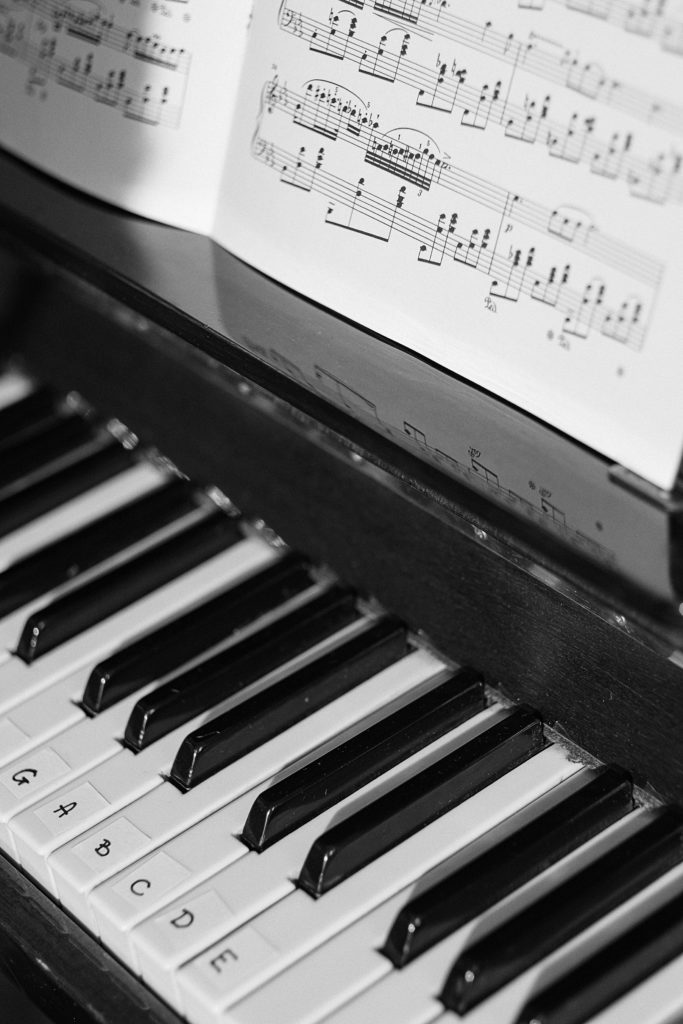
Frequently Asked Questions About Measures in Music
The measure is one of the fundamental building blocks of music, providing a rhythmic framework that musicians and composers use to create melody, harmony, and rhythm. But what is a measure in music, how do measures work, and why are they so important? In this FAQ section, we aim to answer the questions about measures in music, offering a comprehensive insight into the exciting world of musical measures.
What is the function of measures in a music composition?
Measures serve as the building blocks of a composition, providing a structured framework for organizing the rhythm, melody, and harmony.
What does a time signature in music indicate?
A time signature, written at the start of a music piece, tells how many beats are in each measure (top number) and which note value is equivalent to a beat (bottom number).
Why is music divided into measures?
Dividing music into measures helps provide rhythmic structure and assists in coordinating musical elements, making it easier to read, perform, and compose.
How do you count measures in music?
You count measures by counting the number of beats in each measure according to the time signature. For example, in a 4/4 time, each measure has four beats.
How are measures notated in sheet music?
Measures are notated by vertical lines that segment the staff in sheet music. Each segment is a measure, containing a set number of beats defined by the time signature.
Can the number of beats in a measure change in a piece of music?
Yes, it can change if there’s a change in the time signature. This is called meter change and it alters the number of beats per measure.
Why do some songs have irregular measures?
Some composers use irregular measures for expressive effect, to create rhythmic interest, or to accommodate lyrics or melodic phrases.
What is the relationship between measures and note values?
The note values in a measure add up to the total number of beats defined by the time signature. For instance, in a 4/4 measure, you could have four quarter notes, or eight eighth notes, etc.
What’s the role of measures in song structure?
Measures help to shape the overall structure of a song by grouping beats into units, thus providing a rhythmic framework for arranging musical elements like melody, harmony, and lyrics.
How do measures contribute to musical phrasing?
Measures provide a rhythmic framework that can guide the creation of musical phrases, which are like sentences in the language of music.
How to calculate the length of a measure in music?
The length of a measure is calculated by dividing the number of beats in a measure by the song’s tempo (BPM). The result will be the measure’s duration in seconds.
How much is 8 measures in a 4/4 time signature?
In a 4/4 time signature, 8 measures would contain 32 beats (4 beats per measure x 8 measures).
What does it mean to syncopate measures in music?
Syncopation involves placing emphasis or accents on unexpected beats within a measure, creating a rhythmic surprise or tension.
What’s the impact of measures on music dynamics?
Measures provide the rhythmic structure that can guide the application of dynamics—variations in loudness—in a musical performance or composition.
How are measures related to rests in music?
Rests are symbols in music that represent silence. Like notes, they have specific durations and count towards the total number of beats in a measure.
How are measures used in music recording software?
In music recording software, also known as DAWs, measures help organize the timeline, allowing for precise editing, looping, and synchronization of musical elements.

